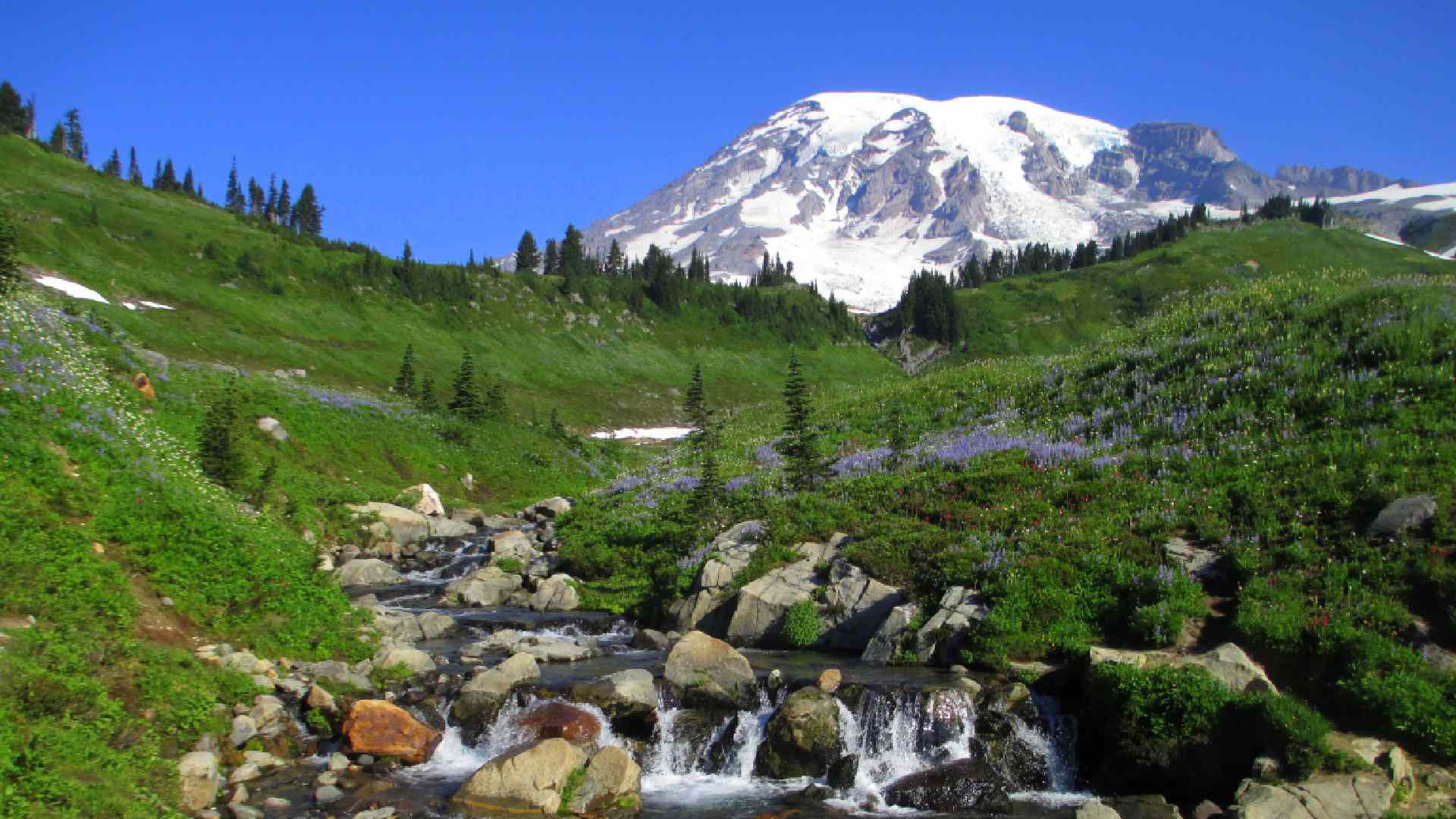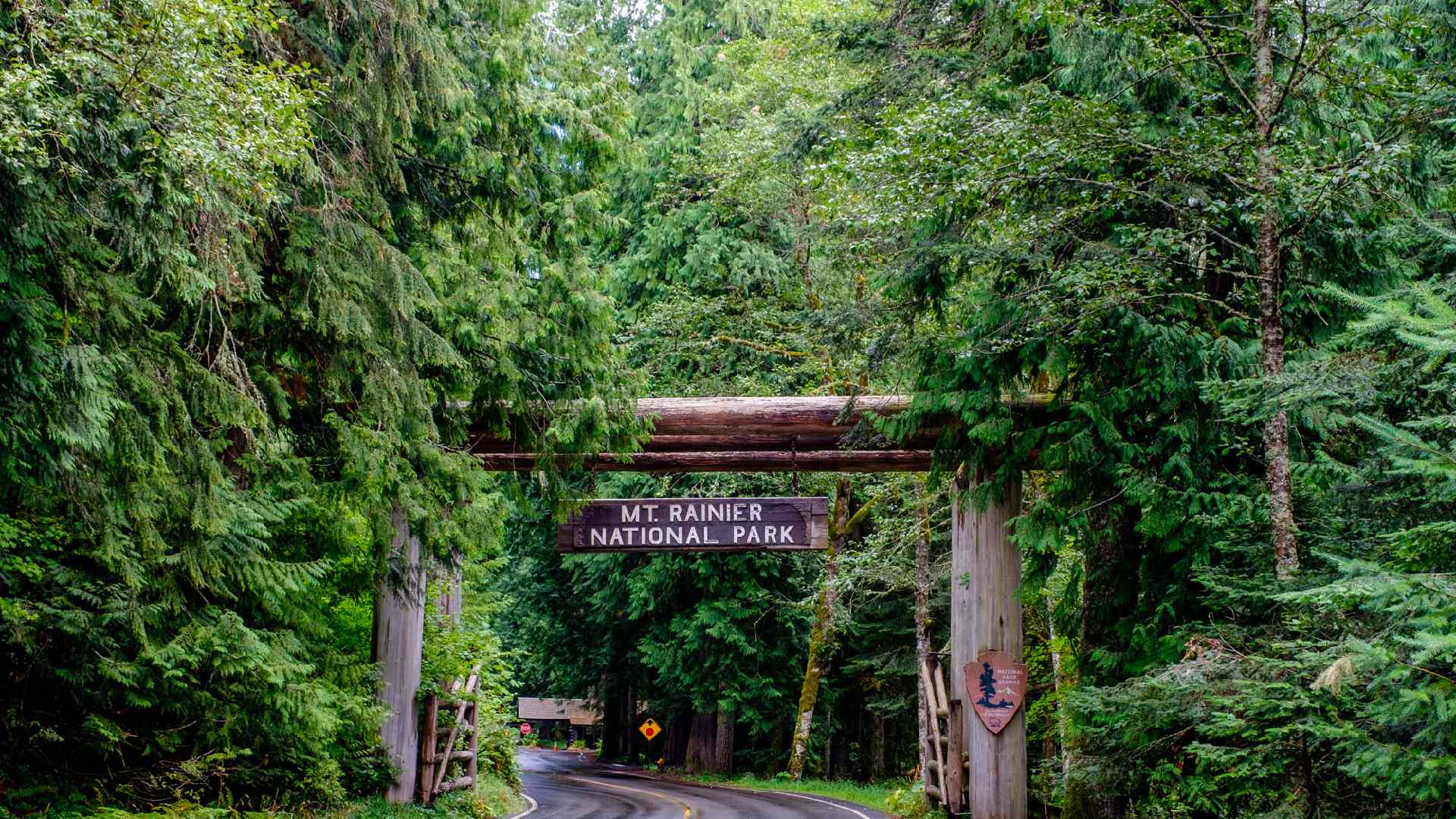
Mount Rainier National Park, Washington:
Mount Rainier National Park, located in Washington state, is home to the iconic Mount Rainier, a towering stratovolcano and the highest peak in the state. Here’s a detailed description of the place:
Visitor Fee:
There is an entrance fee to visit Mount Rainier National Park. As of the knowledge cutoff in September 2021, the entrance fee for a private vehicle is $30 for a seven-day pass. Motorcycles are charged $25, and pedestrians or cyclists entering the park on foot or by bicycle pay $15 per person for a seven-day pass. The fees may vary, so it’s recommended to check the official National Park Service website for the most up-to-date information.
Transportation:
Visitors can reach Mount Rainier National Park using various means of transportation:
- Car: The park is easily accessible by car via State Route 706, which leads directly to the Nisqually Entrance in the southwest part of the park. Several other entrances provide access to different areas of the park. Roads within the park are well-maintained but can be narrow and winding.
- Public Transportation: Public transportation options to the park are limited. The closest major airports are Seattle-Tacoma International Airport (SEA) and Portland International Airport (PDX), from where visitors can rent a car or arrange private transportation to the park.
Things to Do:
- Scenic Drives: Drive along the scenic roads within the park to admire stunning mountain vistas, old-growth forests, meadows, and rivers. The Paradise Valley Road and the Stevens Canyon Road are popular scenic drives offering breathtaking views.
- Hiking: Explore the park’s extensive trail system, which offers a range of hikes for all skill levels. Popular hikes include the Skyline Trail, the Wonderland Trail (a 93-mile loop around the mountain), the Grove of the Patriarchs, and the Comet Falls Trail. These hikes showcase the park’s diverse ecosystems, wildflower meadows, waterfalls, and panoramic views.
- Visitor Centers: Visit the park’s visitor centers, including the Henry M. Jackson Visitor Center at Paradise and the Ohanapecosh Visitor Center. These centers provide exhibits, information, and ranger-led programs about the park’s geology, flora, fauna, and history.
- Ranger Programs: Attend ranger-led programs, including guided walks, talks, and evening campfire programs. Rangers share their knowledge and provide insights into the park’s natural and cultural resources.
- Camping: Mount Rainier National Park offers several campgrounds, both reservable and first-come, first-served. Camping allows visitors to experience the park’s serene beauty and connect with nature.
List of Activities:
- Wildlife Viewing: Keep an eye out for wildlife, including black bears, elk, deer, marmots, and a variety of bird species. The park’s diverse habitats support a range of wildlife, offering opportunities for wildlife enthusiasts and photographers.
- Photography: Capture the awe-inspiring landscapes, glaciers, wildflowers, and wildlife of Mount Rainier National Park. The changing light throughout the day, particularly during sunrise and sunset, creates stunning photo opportunities.
- Snowshoeing and Winter Recreation: During winter months, the park transforms into a winter wonderland, offering opportunities for snowshoeing, cross-country skiing, and snowboarding. Ranger-led snowshoe walks are available to explore the park’s winter landscapes.

Why People Enjoy Coming Here:
People enjoy visiting Mount Rainier National Park for several reasons:
- Majestic Scenery: Mount Rainier’s towering presence, glaciers, alpine meadows, and dense forests create a majestic and picturesque landscape. Visitors are captivated by the sheer beauty and grandeur of the mountain and its surroundings.
- Outdoor Recreation: The park provides a wide range of outdoor activities, including hiking, camping, wildlife viewing, and winter sports. Outdoor enthusiasts are drawn to the park’s diverse ecosystems, pristine wilderness, and ample opportunities for adventure.
- Stunning Wildflower Displays: Mount Rainier National Park is renowned for its vibrant wildflower displays, especially during the summer months. The meadows burst with colorful blooms, creating a breathtaking sight and attracting flower enthusiasts and photographers.
- Glaciers and Waterfalls: The park’s glaciers and snowfields feed numerous cascading waterfalls, adding to the park’s beauty. Visitors can witness the power and elegance of these natural features while exploring the park’s trails.
- Solitude and Serenity: Mount Rainier National Park offers visitors a chance to escape the hustle and bustle of city life and immerse themselves in the tranquility of nature. The vast wilderness and remote areas of the park provide solitude and a peaceful atmosphere.
Age of the Place:
Mount Rainier National Park was established on March 2, 1899, making it over 120 years old as of the knowledge cutoff in September 2021.
Additional Nearby Attractions:
- Mount St. Helens National Volcanic Monument: Located to the south of Mount Rainier National Park, Mount St. Helens is an active volcano that erupted in 1980. The monument offers interpretive centers, visitor exhibits, hiking trails, and viewpoints to learn about the volcanic eruption and its aftermath.
- North Cascades National Park: Situated to the north of Mount Rainier, North Cascades National Park is known for its rugged mountain ranges, glaciers, and pristine wilderness. The park offers scenic drives, hiking trails, and opportunities for camping, fishing, and wildlife watching.
- Crystal Mountain: Located just outside the northeast corner of Mount Rainier National Park, Crystal Mountain is a popular ski resort that offers winter sports activities such as skiing, snowboarding, and snowshoeing. It also provides scenic gondola rides during the summer months, offering stunning views of the surrounding mountains.